1. Memory
1.1. Memory: In this architecture memory is used to store both programs and data. This makes it so the computer needs to communicate in the same way to receive information and to get the instructions it needs to follow. This creates a problem known as the Von Neumann Bottleneck, where having to access data through the same bus as instructions prevents the CPU from using all of its power. The MAR and MBR are the main ways to access memory.
1.2. MAR:
1.2.1. MemoryAddres Register. It's a field that receives memory locations.
1.3. MBR:
1.3.1. It both receives and outputs the contents of memory.
1.4. There are two basic operations: store and fetch. Store recieves one value from MAR and one from MBR, it then stores the values of the MBR in the position introduced in the MAR. Fetch receives one value from the MAR and fills the MBR with the value found on that location.
2. CPU
2.1. ALU
2.1.1. Arithmetic-Logic Unit
2.1.1.1. Arithmetic-sums and substractions,multiplications and divisions done by adding and substracting
2.1.1.2. Logic-AND,OR,NOT,NAND,NOR,etc.
2.1.2. operations in binary mode
2.2. Registers
2.2.1. They hold the highest hierarchy (They are loaded first)
2.2.2. There are a type of regiter for each primitive data type, and combination of some of them
2.2.3. They execute specific tasks
2.2.4. They can be accessed by assembly language
2.3. Control logic
2.3.1. Also known as Control Unit
2.3.2. It tells other computer's devices and components how to respond to programs instructions.
2.3.3. It directs the operations of other units by providing timing and control signals.
2.3.4. Most computer resoutces are managed by the control unit.
2.3.5. It directs the data flow between the CPU and other devices.
3. Inputs
3.1. Are external devices that send data to the computer. They are connected through an interface and linked through an IO module.
3.2. Examples: Keyboard, mouse, disk drive.
3.3. Memory mapped: Single address space for memory and I/O.
3.4. Isolated: The address space for I/O is isolated from the memory.
4. Output
4.1. Graphics (Visual)
4.1.1. It is the code sent to the graphics card to later be displayed as a video
4.2. Tactile
4.2.1. This is a technology to responds to the user’s touch or use. This technology is called Haptic Feedback, which is a response of vibration by the device.
4.3. Audio
4.3.1. Devices such as headphones, speakers, etc... Which plays audio through the device.

